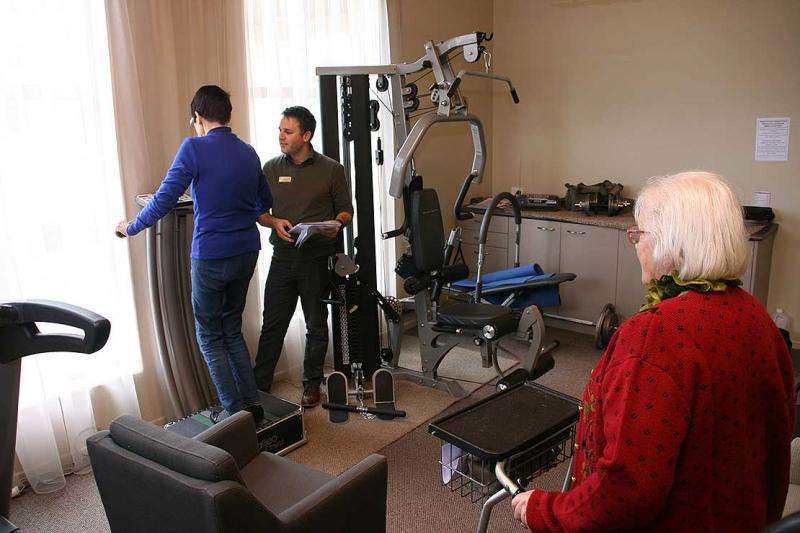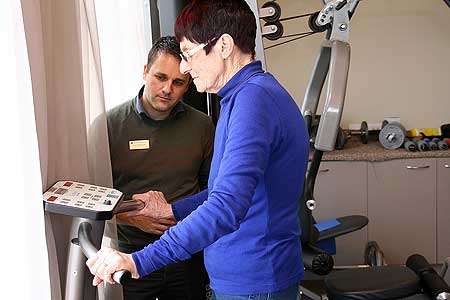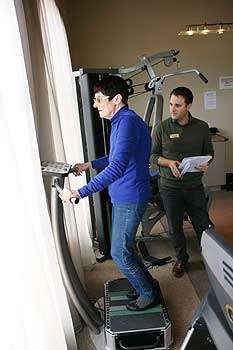Putting the balance back into aging lives

Increased frailty in the elderly means a higher risk of falls, fractures, lack of independence and an overall decreased quality of life. Now a new study from Massey University's School of Sport and Exercise has highlighted the benefits of Whole Body Vibration (WBV) therapy for the frail elderly.
Senior tutor in life sciences Daniel Wadsworth and colleague Dr Sally Lark have spent the past three years carrying out research for the Frail Elderly Vibration Exercise Responses (FEVER) study. It involved 117 rest home residents from 12 homes in the Wellington region.
Mr Wadsworth says the participants, all aged 70 years and older, were targeted as they can't achieve conventional exercise at an intensity that will benefit their health.
"We wanted to investigate whether WBV exercise could maximise function and increase the quality of life for the residents. Previous research has shown potential benefits in various populations, including sedentary people, and healthy, mobile, community-dwelling elderly, but there is a gap in research focusing on the frail elderly who stand to benefit most from this accessible form of exercise," Mr Wadsworth says.
Participants were randomly assigned to one of three groups: a WBV-exercise group; a simulated WBV-exercise group; or a control group. The WBV and simulated participants took part in three 20-minute sessions per week, while the control group received no exercise intervention beyond normal care.

Mr Wadsworth says the WBV participants appeared to benefit from the therapy in several ways. "Participants reported increased strength, balance, falls-related confidence and overall quality of life. It has the potential to enhance independence and quality of life, and is a cost-effective way of exercise delivery to a population who can't exercise in traditional ways. WBV is proven to be a fantastic rehabilitative tool for building confidence in the long term."
Feedback from participants included:
- "Knees feel 100 per cent better, no pain."
- "Using the machine has increased my sleep, walking and wellbeing. I feel more relaxed and confident."
- "It has felt much easier to walk, even without my stick."
One of the study's participants' mobility improved so much he was discharged from the rest home and returned to independent living in the community. A carer assists him three times a day to help with tasks such as showering and preparing meals.
Seventy-year-old Syphone Kingsada wanted to take part in the study to improve his quality of life.

"I found the therapy great. I now have improved mobility, and I am more confident and better at keeping my balance. I can go for walks at the shops, and leave the house more often.
"Moving out of Longview Home to my own place has made my life so much better. My children can come and visit me, and even stay the night," he says.
Mr Wadsworth says, unlike other research, the FEVER study provides a timeline for WBV-exercise benefits. "After completing the 16-week training intervention, benefits remained for three to six months, suggesting that WBV exercise could be a useful rehabilitative tool for building confidence and ability for more challenging exercise.
"However, the psychological benefits appear to last longer than the physical ones, leading to a mis-match between confidence and physical ability. This has the potential to increase fall risk if not managed properly," Mr Wadsworth says.
He believes future research should focus on identifying the direct impact WBV exercise has on falls. "Research should also explore the safe use of WBV exercise by individuals with lower-limb joint replacements, given their prevalence in this population."
Mr Wadsworth and the FEVER research team recently presented their findings at the Conference of the New Zealand Association of Gerontology – Making Active Ageing a Reality – held in Wellington earlier this month.



















